Are you ready to explore a world of rhythms and beats with cajon?
The cajon has a history that stretches back to African and Latin American rhythms. Evolving from being a simple wooden box to becoming an integral part of various music genres worldwide. In this beginner's guide, you'll get an introduction to how to best use your cajon, and how you can maintain it to extend its lifespan.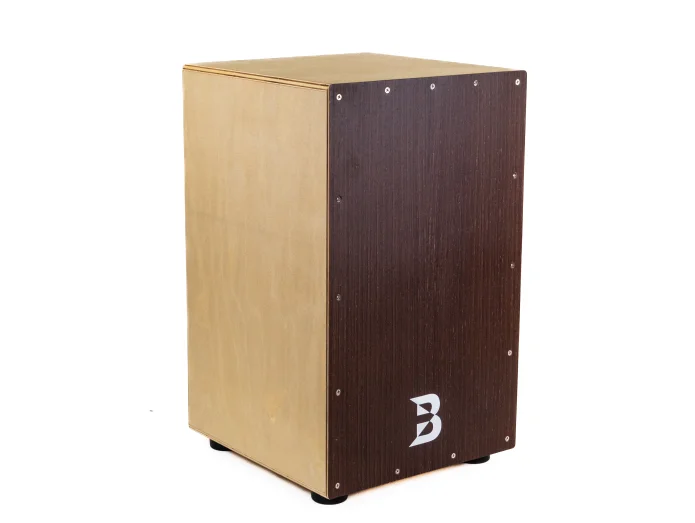
The Basic Strikes
First and foremost, let's dive into some basic strikes on the cajon, which form the foundation of your rhythms. Remember, it's okay to experiment and find your own unique style:
Bass Strike: Strike with the middle of your hand and place the strike slightly above and in the middle of the cajon for the best bass sound.
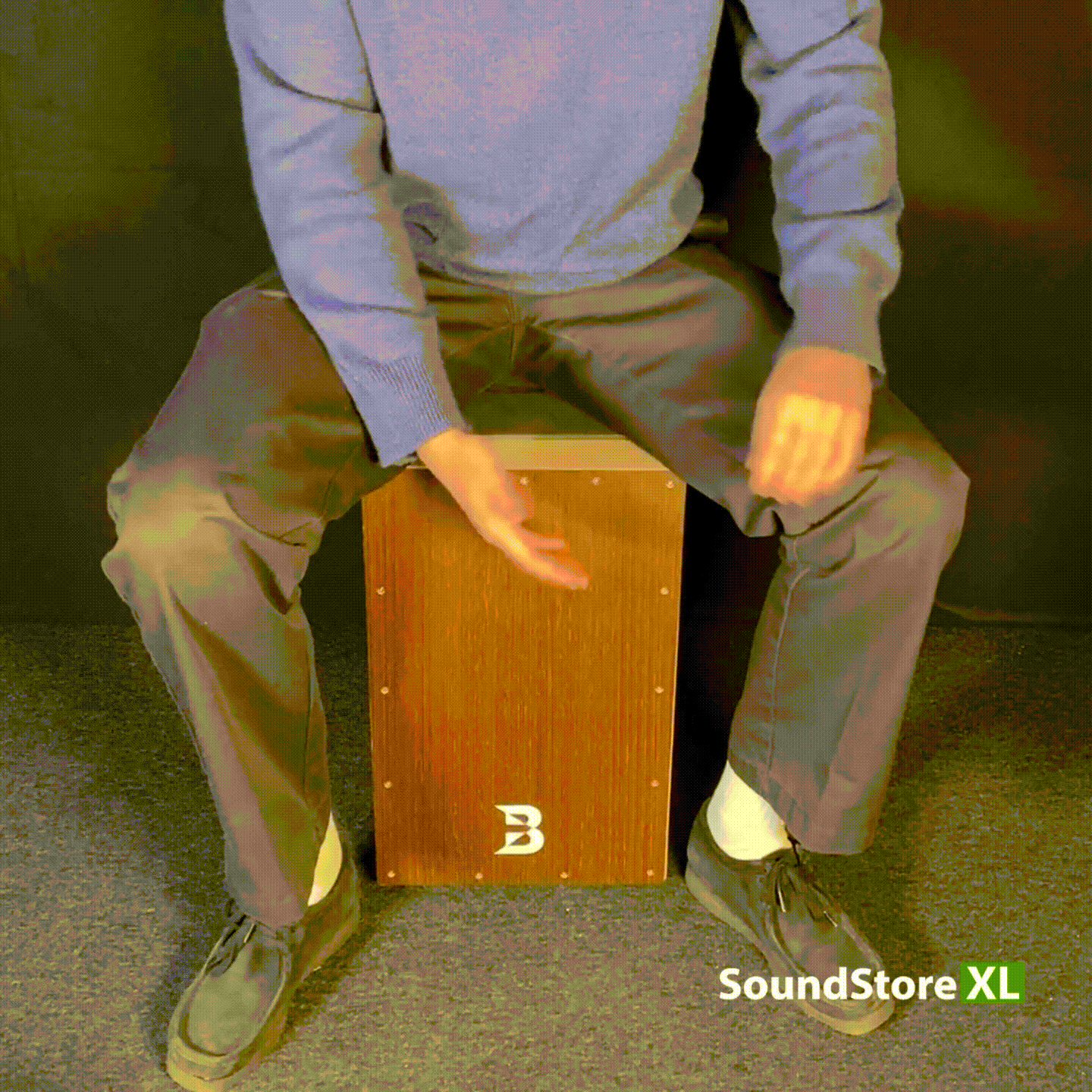
Edge Strike: The slap occurs when the middle of your palm hits the drum, and your relaxed fingers continue forward to create the slap sound. It takes some practice, so be patient.
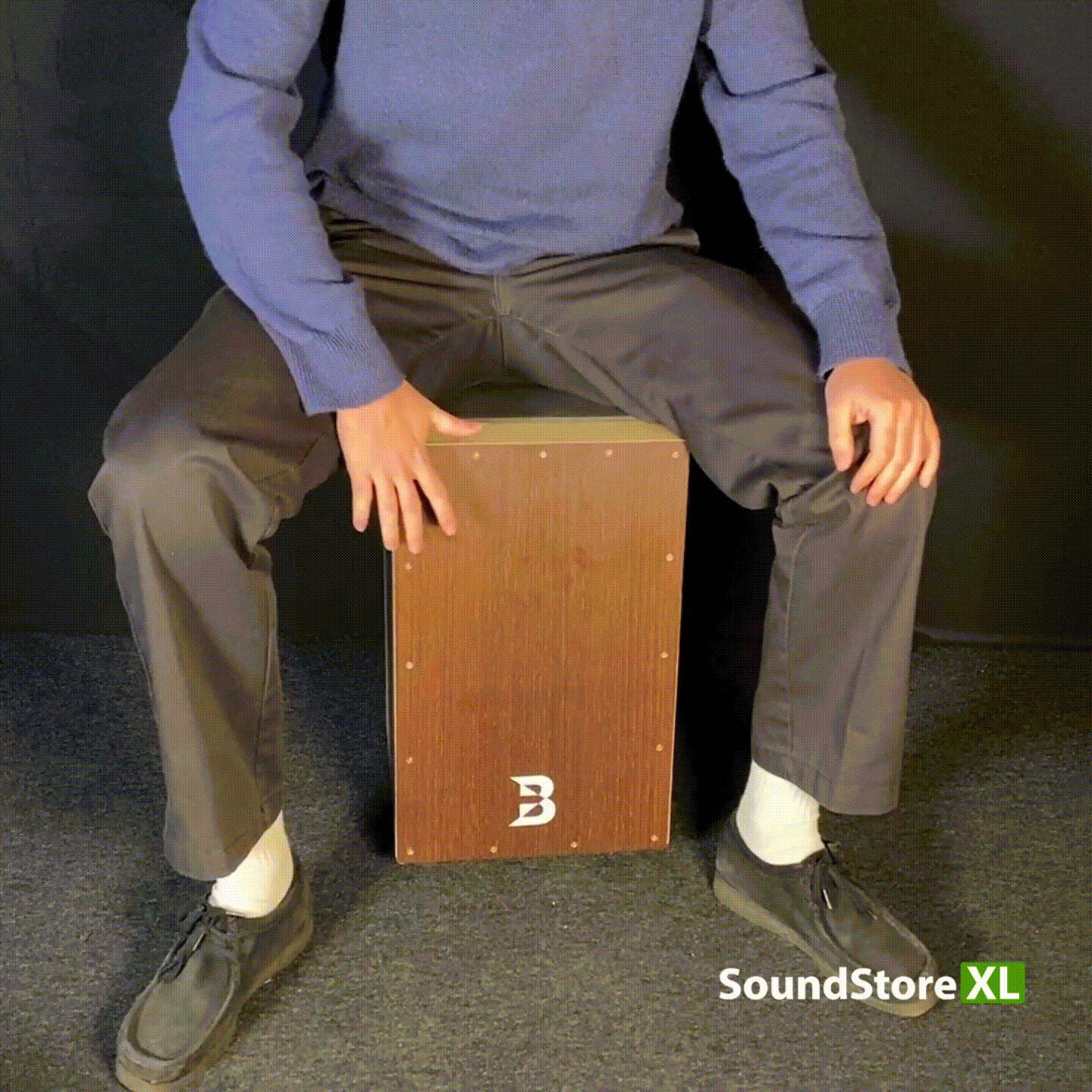
Finger Strike: Use two fingers. Keep the fingers stiff and relaxed after the strike.
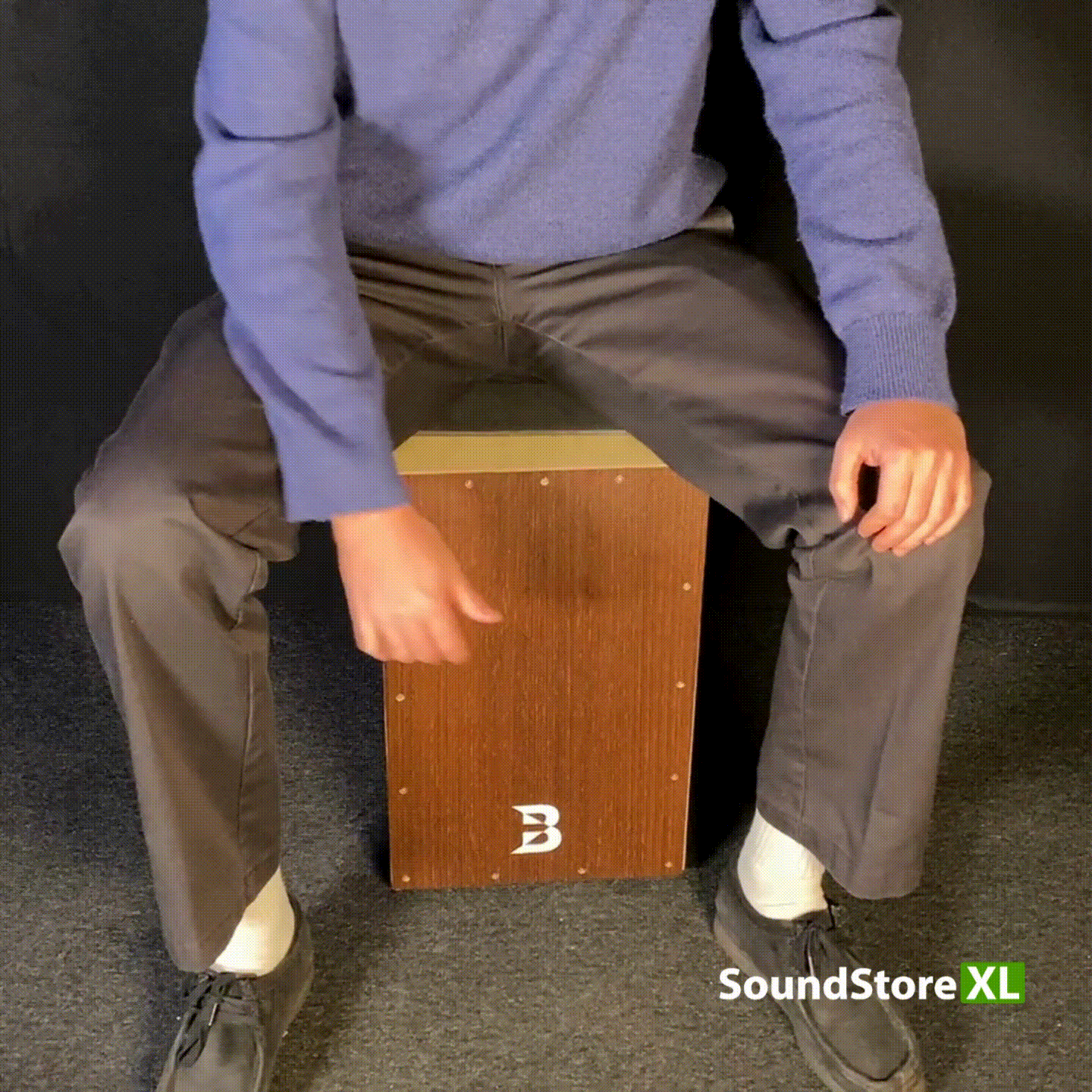
Ghost Strike: The touches are light and felt more than they are heard. They add depth to your rhythms.
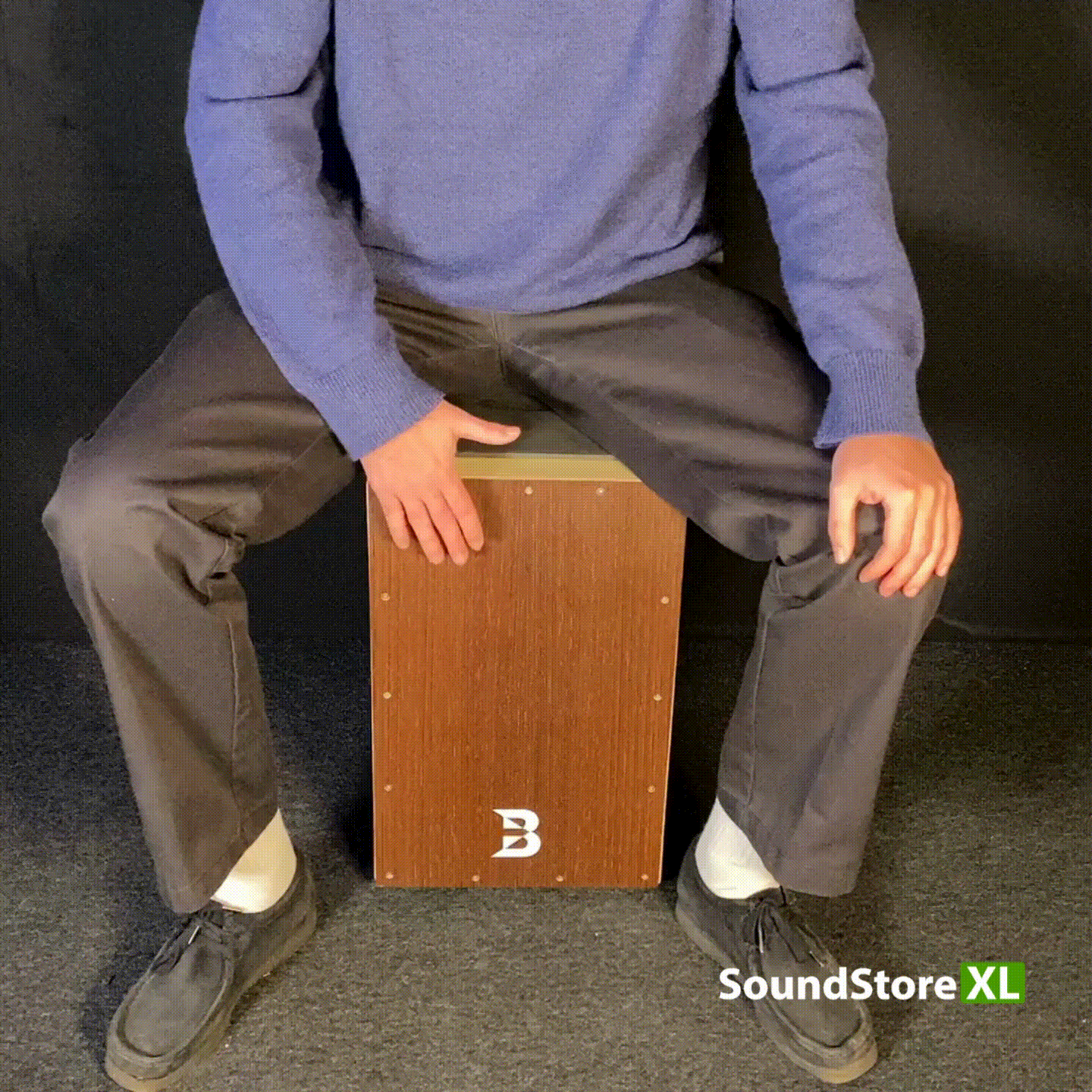
Find the Right Sitting Position
A good posture is the key to mastering the cajon. When sitting on top of the cajon, place yourself with feet flat on the ground. Lean forward enough to reach the playing area and make sure to keep your back straight. This provides support to your hands and arms while playing.
Focus primarily on the top third of the cajon's surface.
Enhance Your Cajon Experience with a Cajon Pedal
If you've mastered all the strikes and feel ready to challenge yourself, then a so-called "cajon pedal" might be a good bet on how to lift your cajon playing to new heights.
Let's explore what a cajon pedal is and how it can enhance the music experience.
This foot pedal is designed with user-friendliness in mind. It adds an extra dimension to your cajon setup and is easy to integrate into your play. With ease, you can adjust the pedal and experiment with different positions to find the optimal angle and pressure that suits your playing style.
Pedals are typically designed to be universally applicable to all common cajon drums, making them an accessible and flexible choice for you.
Maintenance of Your Cajon Drum
To ensure that your cajon always delivers the best sounds, it's important to take care of it. Clean the surface regularly with a soft cloth to remove dust and dirt. Avoid exposing the cajon to extreme temperatures and humidity as it can affect the wood.
Also, regularly check the snares and make sure they are adjusted correctly. If your cajon has an adjustable snare, you can experiment with different settings to find the sound that best suits your playing style.
Remember to treat your cajon with love, and it will reward you with fantastic rhythms for many years to come.



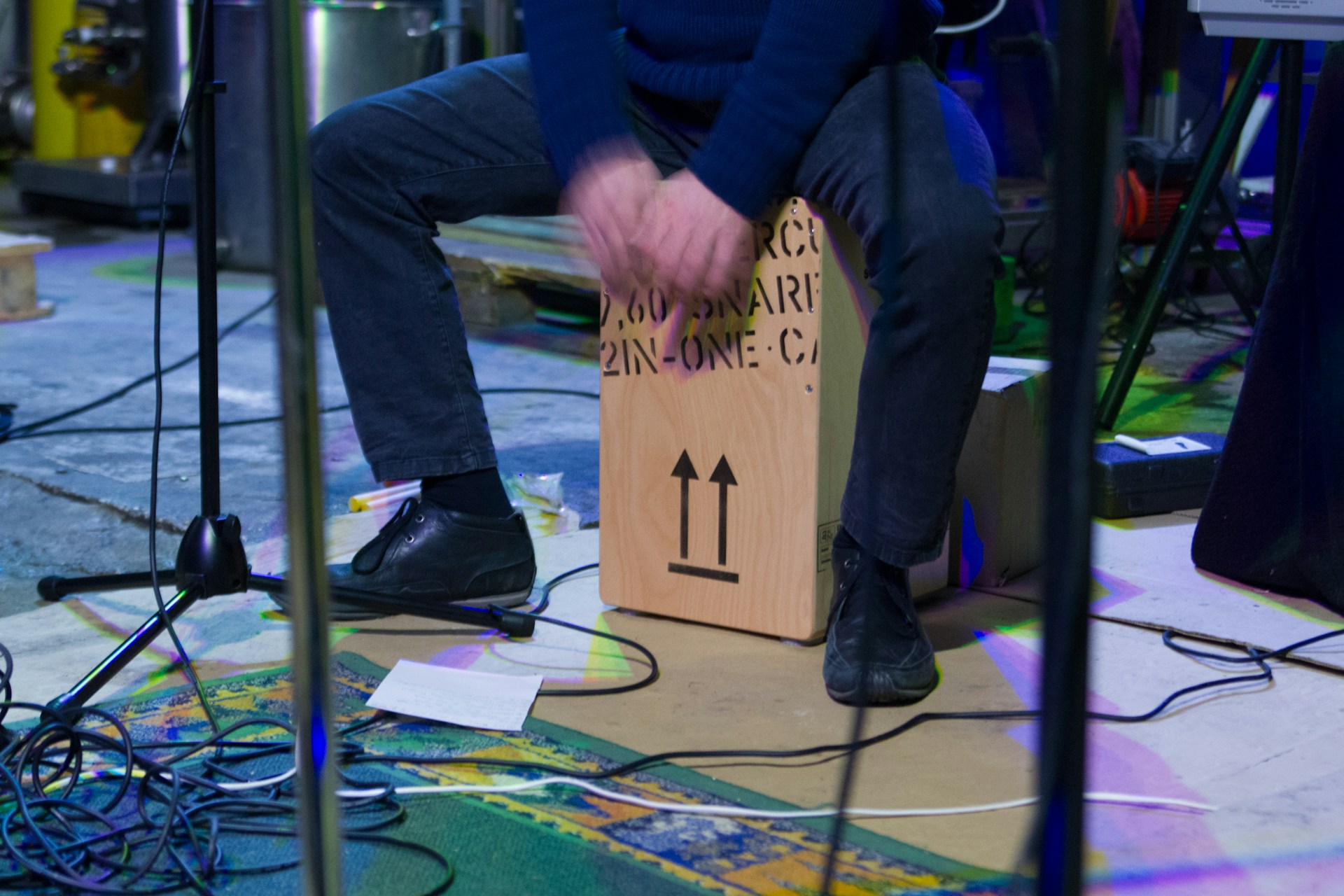


→ Back to our Information Center ←
Terms and conditions for private clients
Click here to see our terms and conditions for business clients
Music Group Denmark A/S and this e-commerce shop will be referred to as "seller, us, we, our, the webshop", while the client purchasing a product from Music Group Denmark A/S will be referred to as "buyer, client, customer, you, your, yours”.
Address:
Music Group Denmark A/S
Norddigesvej 4
DK-8240 Risskov
DENMARK
info@soundstorexl.com
Tel. +45 70273041
Private company
VAT: DK-33777175
Year of establishment: 2011
Delivery
The delivery costs depend on the size and weight of the order as well as the address and country of its destination. Please visit our Information Center for an updated country-specific price list. We reserve the right to charge the actual shipping price in case of goods exceeding the carriers' standard size and weight restrictions. We will inform the customer about this before the order is completed.
You have the option to enter an alternate shipping address, e.g. your workplace, when placing the order.
The sender of the package will be our logistics provider Online Distribution.
Please note:
When you order goods for private delivery, the order can be delivered by one or more carriers due to the fact that our suppliers use different freight companies. Packages will be handled according to the company’s method of conveyance.
You can find a list of our carriers in our Information Center. If you would like to know who will be delivering your order, in most cases you can find the information on Your Account. If this is not stated, please feel free to contact us.
Payment
In our e-commerce store you can pay with the following means of payment:
Credit cards
MasterCard
MasterCard Debit
Maestro
Visa
Visa Electron
The amount will not be drawn until we ship your order and we cannot draw a larger sum than the one you approved at the time of purchase.
Bank transfer
Please transfer the total order amount (including the delivery fee) to our bank Spar Nord Bank A/S:
BIC/Swift code: SPNODK22
IBAN: DK2290041120451932
We will charge no fees for banktransfers.
Gift certificate
Please note that you can only use one gift certificate per order.
For information on other country-specific means of payment, please click here.
When we have received the payment, we will ship your order immediately.
Prices
We reserve the right to cancel an order due to incorrect pricing in our e-commerce store (this might occur due to automatically calculated prices). The automatically generated confirmation, you will receive upon placing your order, is thus simply a copy of the online shopping cart - not our final order confirmation.
It is possible for you to view your previous orders in our online shop (starting from when you created a login with us). After logging on you can print your invoices etc.
Please note that both Danish and international private clients will be charged VAT according to Danish legislation.
Terms and conditions for discount codes and gift certificates
Unless stated otherwise, the following terms apply to the use of discount codes when placing a regular order (not applicable to individually prepared offers).
1. A discount code can only be used once per customer per day.
2. You cannot use more than one discount code per order.
A gift certificate is considered a deposit, not a product purchase. A gift certificate cannot be used as payment for a new one.
Right of return/cancellation
When shopping with us, you have 30 days right of cancellation. It expires 30 days after you:
When returning a product to us, please download our return form, fill it in and include it in the package.
Please note that some goods cannot be returned as normal cargo due to their size (this usually applies to goods over 30 kg or 2 meters in length).
You cannot cancel an order just by refusing to accept delivery without specifically letting us know.
Goods not included in the right of return/cancellation
We do not accept the return of demos and goods that have been made or ordered specifically for you (e.g. items that have been shortened according to your instructions or custom-made items). Furthermore, we do not accept the return of certain product categories, as it is impossible to assess the extent to which they have been used: pickups, pickup needles, bulbs, liquids, paint etc.
Return policy
Please use this return address:
Music Group Denmark A/S
Norddigesvej 4, Gate 6
DK-8240 Risskov
DENMARK
Please note that it is not possible to send us the goods COD.
We only accept products returned in their original packaging and only if the included software is not enabled. This means that when we receive the returned products, they must always be in minimum the same condition as when we shipped them. Therefore we kindly ask you to make sure that the item is properly wrapped. Since you are responsible for the goods until we receive them, we encourage you to keep your track and trace number from the carrier.
Please include a copy of the order confirmation or other documentation for your purchase when returning the item to us.
Please note that you are responsible for covering the shipping costs when returning a product to us.
In cases where the right of cancellation is used, we refund your purchasing price plus the delivery costs (if you had any when the goods were delivered to you) as soon as possible (and no later than 30 days from the day we received notification of your decision to cancel the order).
Please note regarding returned goods:
We always check goods returned to us, and you might lose your payment in part or in full. This happens if a product has been damaged or its value has been reduced. Among other things this could be the case for one of the following reasons:
Refund:
We make the refund with the same means of payment that you used for the original transaction unless we have explicitly agreed otherwise. If you paid with credit card, we will transfer the money back to the same card.
We can withhold the payment until we have received the returned item from you (unless you have submitted documentation for returning it). We refund the amount that you paid for the goods as soon as possible (and no later than 30 days from the day we received notification of your decision to cancel the order).
Read more about the cancellation of orders paid with MasterCard and Visa Card.
If the product is faulty (right of complaint)
When you shop in our e-commerce store you are protected by Danish legislation offering a high level of consumer protection. You have 12 months warranty and 12 months right of complaint which allows you to submit a complaint about errors or omissions that existed when the item was sold.
We do not provide support or warranty on free software (e.g. a trial or limited edition). The manufacturer provides the software support.
It is a requirement that the complaint is justified and that the defect has not arisen as a result of an incorrect use of the product or other damaging behaviour.
Please have a look at our Information Center for answers to frequently asked questions regarding this.
You are also very welcome to contact us. Depending on the specific situation we can tell you where the burden of proof lies, if the goods can be repaired or exchanged or if a discount can be an option.
Repair
If an error occurs with a product within the warranty period (12 months warranty from date of purchase + 12 months right of complaint), please contact us with a detailed description of the issue. Then we can arrange the details of the repair before you ship it.
Sending the product for repair consists of the following steps:
Fill in our online RMA form (repair form) to help us minimize the turnaround time.
Send it to us.
Await our answer regarding repair.
Send the product according to our instructions. We might ask you to send the product directly to the manufacturer to shorten the expedition time. Please note that it is not possible to send the goods COD.
When sending the package you MUST enclose:
An address to which we can return the product after repair
A list of the equipment included in the package, e.g. power supply
A copy of the original invoice (can be found in your customer account)
We will then get back to you as soon as possible.
Repair terms and conditions
The product must be sent securely wrapped, at best in its original box.
In case the stated error cannot be observed, or if the error has been caused by another product, an inspection fee of €55 including VAT is charged by invoice. The amount must be paid before the product can be returned to you.
Please note that you are responsible for covering the shipping costs when sending a product for repair. We pay the costs when returning the product to you after repair (only for private clients and only if the repair is covered by the warranty or right of complaint).
Personal Data Protection Policy
In order for you to enter into an agreement with our e-commerce store, we need the following information:
We solely register this personal information in our system for the purpose of processing your order.
No personal information recorded on our webshops will ever be transferred, sold or made available to third parties. All information is stored in a secure manner and is only available to our trusted employees.
Our e-commerce store has a highly encrypted and secure system for online payments to guarantee your safety when shopping with us.
The webshop system uses so-called cookies to manage the content of your shopping cart. In short, a cookie is the name of a file stored on the buyer's computer. We use these cookies to recognize customers and, for instance, remember what items are in the shopping cart when you shop with us. It is also possible for you to ask the system to store your contact details for your next visit. If you ever want to erase the information stored via cookies, this can be done in the browser settings. In Internet Explorer, for instance, please go to the "Tools" menu and then choose "Internet Options".
In addition, we register the IP address from which the purchase is made. This information is normally not used, but can be used in the case of a police investigation. The IP address is stored as long as necessary in relation to the police investigation. All fraudulent orders will be reported to the police!
According to Danish legislation the personal data are registered with Music Group Denmark and stored for five years after which the information is deleted.
When collecting personal information through our website, it is always done with your preceding consent. In that way you always know which information we have and why.
Our managing director and customer service employees have access to the information that is registered about you. The managing director of Music Group Denmark, Palle Bertelsen, is our systems manager.
When you are registered with Music Group Denmark A/S, you are always entitled to object to the registration. According to Danish legislation you also have the right to insight in the information we have on you. Please contact Music Group Denmark on info@soundstorexl.com regarding this matter.
Log entry
We use log statistics on our e-commerce store, which means that our system collects information that can give us statistics on e.g. the number of visitors, where they come from and where on our shop they drop out. Log statistics are used only for the purpose of optimizing our online shop.
You can choose to have your email address included on our mailing list. After registering you will regularly receive news and other information regarding our e-commerce stores. You may subscribe or unsubscribe this service at any time.
When you are registered with Music Group Denmark A/S, you are always entitled to object to the registration. According to Danish legislation you also have the right to insight in the information we have on you. Please contact Music Group Denmark regarding this matter:
Music Group Denmark A/S
Norddigesvej 4
DK-8240 Risskov
DENMARK
VAT: DK-33777175
Tel.: +45 7027 3041
info@soundstorexl.com
Complaints
If you want to complain of your purchase, please contact our customer service at info@soundstorexl.com or telephone +45 70273041.
→ Back to our Information Center ←